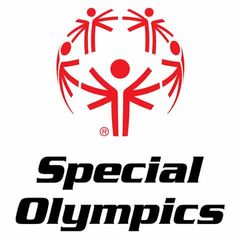By: Abe Assaad; Monica Forquer, CPT, MS; Melissa Otterbein, MPH, CHES, Certified USA Triathlon Level II Coach
In our last post, we shared that the nearly 200 million people with intellectual disabilities (ID) across the world are about 2-4 times less likely to meet the physical activity guidelines as compared to the general population. People with ID want to exercise, but often lack support to do it consistently. Trained fitness professionals can support people with ID by taking the free Special Olympics Inclusive Fitness Training on the ACE platform and by using the following tips and strategies.
Working with People with Intellectual Disabilities: Tips and Strategies
To create suitable exercise sessions for people with ID, it's essential to learn about their challenges, interests, and goals. Ask them about their previous gym experiences and use the Special Olympics Lifestyle Survey before starting an exercise program. The survey is easy to understand and can help you understand the daily life and fitness-related behaviors of your client. You can use it repeatedly to assess progress.
As a fitness professional working with people with ID, one of your main goals is to help them become independent in the gym. People with ID are motivated by the ability to do things on their own, so teach them how to use equipment, perform exercises, and develop a routine. Additionally, teach them gym etiquette, which includes where to put their belongings, what clothes to wear, how to check-in and check-out, and how to clean equipment properly.
Next, assess your client's fitness level based on their needs. People with ID usually have lower cardiovascular and muscular fitness, so assessing their fitness will help you provide safe and challenging exercises. Familiarize your client with the testing procedures, provide extra time, and allow them to practice before taking formal measurements. Special Olympics has a Fitness Assessment manual with videos to guide you on how to conduct appropriate fitness tests for people with ID.
During the assessment process and while building your training plan, ensure that workouts are age appropriate. Treat adults with intellectual disabilities as adults to show respect and encourage their self-efficacy. Avoid using child-like language or jargon (e.g., kid, or buddy).
Next, start small! It can be challenging for a person with ID to remember multi-step exercises or movement patterns, especially for a client who has not previously attended a gym. Try incorporating fewer pieces of equipment in the initial sessions and provide a few demonstrations of an exercise prior to having a client with ID try it for the first time. This will help build confidence in completing these new exercises successfully. To support this, limit the amount of cues shared at once, especially when providing feedback on form. For example, point out one area to address for form improvement (e.g., “chest forward”) and allow the client to make that change correctly multiple times before correcting an additional form component. Additionally, consider using visual aids (e.g., OMNI RPE scale, pictures, trackers) and demonstrating an exercise with correct form before asking the client to try the exercise.
Finally, find ways to support physical activity outside of sessions. Many people with ID may not have access to specialized workout equipment outside of a gym, and may lack consistent transportation resources to continue visiting the gym outside of client sessions. However, it doesn’t mean they don’t want to be active at home! Consider handouts or trackers that an athlete can take home as a visual reminder of activities to complete. Learn about their home and community environments. For example, do they have a park or walking trail nearby where they can be physically active in between client sessions? Additionally, to foster social support, consider checking in with your client via text message or brief phone call outside of sessions.
Special Olympics has a variety of resources to support physical activity both inside and outside of training sessions. This includes Fit 5, a free and downloadable resource series comprised of videos, guides, and exercise cards. These provide education regarding eating five fruits and vegetables per day, drinking five bottles of water, and ways to engage in 30 minutes of physical activity at least 5 days per week. The exercise cards and videos incorporate exercises with no equipment that can be used by your clients to workout at home . Clients can use the tracker and read the health tips in the Fit 5 guide to reinforce healthy habits learned in the gym.
An additional physical activity and health resource that can be used outside of client sessions includes School of Strength. Special Olympics athletes and WWE wrestlers teamed up to create a variety of flexibility, strength, endurance, and balance exercise videos that clients can use in between sessions. Lastly, fitness professionals may consider using Special Olympics’ Dynamic Stretches Guide and videos. Featuring Special Olympics athletes, there are 13 dynamic stretches that can be used during a client’s warm up or during warm up outside of the gym.
Use your fitness instruction to promote inclusion of people with ID. You can start by taking the ACE Inclusive Fitness Course for free. You can also find your local Special Olympics Program and reach out to get involved locally. Consider supporting your local team's strength and conditioning skills, leading a fitness program for Special Olympics athletes, or teaching an inclusive fitness class in which people with and without ID can participate in fitness together. Additionally, be sure to check out ACE’s Instagram to learn about fitness assessments you can use in working w/ people with ID.
Contact Special Olympics Fitness at fitness@specialolympics.org




 by
by 







